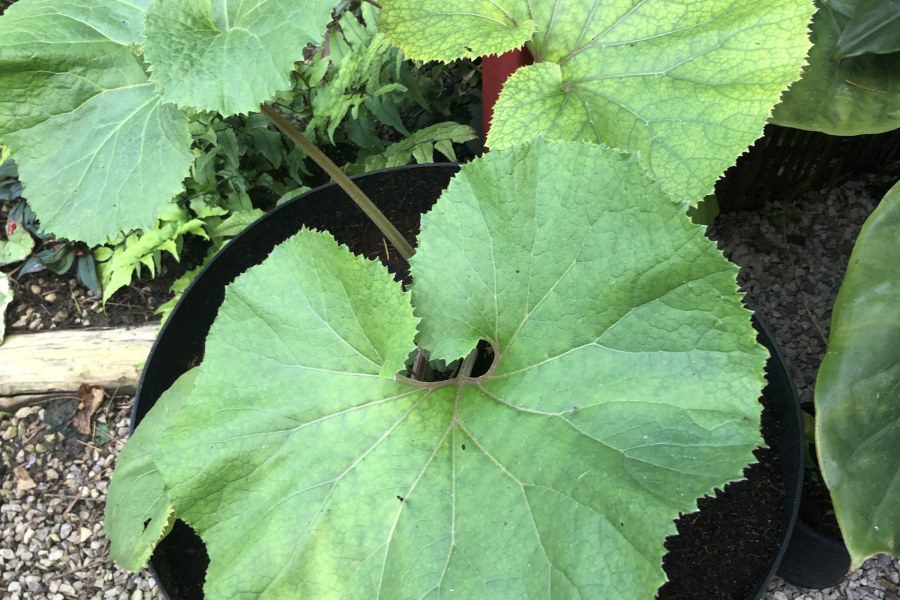Yes, some species of butterbur (Petasites spp.) are considered invasive in the United Kingdom. The most commonly referenced invasive species is the Japanese butterbur (Petasites japonicus), which has become established in parts of the UK. Japanese butterbur is native to East Asia and was introduced to the UK as an ornamental plant. However, it has since spread aggressively in some areas, particularly along riverbanks and wetlands.
The rapid spread of Japanese butterbur can lead to the displacement of native plant species and negatively impact local ecosystems. As a result, efforts are often made to manage and control its populations in order to prevent further invasiveness and ecological disruption.
It’s important to note that not all species of butterbur are invasive in the UK. The native species, common butterbur (Petasites hybridus), is not generally considered invasive. It’s always a good idea to consult with local conservation authorities, botanists, or environmental organizations to get the most accurate and up-to-date information about the invasive status of specific plant species in your area.
Growing butterbur (Petasites hybridus) can be quite rewarding, particularly if you’re looking to add a lush, ground-covering plant to a damp or shady area of your garden. Here’s a detailed guide to help you grow butterbur successfully:
Butterbur (Petasites spp.) is valued for its large, attractive leaves and rapid ground-covering ability, making it an excellent choice for damp, shaded areas in the garden. There are several varieties of butterbur, each with its own unique characteristics. Here are some of the best butterbur varieties to consider:
1. Petasites hybridus (Common Butterbur)
- Description: This is the most common variety, known for its large, kidney-shaped leaves that can reach up to 3 feet across.
- Uses: Ideal for naturalizing in damp, shady areas. It can be invasive, so it’s best suited for areas where its spread can be controlled.
2. Petasites japonicus (Japanese Butterbur)
- Description: Also known as fuki, this variety features large, rounded leaves and can grow up to 5 feet tall. It produces spikes of white to pale pink flowers in early spring before the leaves emerge.
- Uses: Popular in Japanese cuisine for its edible shoots. It’s also excellent for ornamental use in bog gardens or along water features.
3. Petasites japonicus ‘Giganteus’ (Giant Japanese Butterbur)
- Description: A larger cultivar of Japanese butterbur, it has enormous leaves that can reach up to 4 feet in diameter.
- Uses: Great for creating a dramatic, tropical look in large gardens. It needs plenty of space and moist soil to thrive.
4. Petasites fragrans (Winter Heliotrope)
- Description: Known for its fragrant, vanilla-scented flowers that appear in winter before the leaves. The leaves are smaller than other butterbur varieties, typically heart-shaped and around 8 inches across.
- Uses: Good for adding winter interest and fragrance to the garden. It’s less invasive than some other varieties.
5. Petasites albus (White Butterbur)
- Description: This variety has white to pale pink flowers that bloom in early spring before the foliage appears. The leaves are large but not as massive as some other varieties.
- Uses: Suitable for damp woodland gardens or shaded borders. Its white flowers add a bright spot in early spring.
Tips for Growing Butterbur Varieties
- Containment: Butterbur can be invasive, so consider using root barriers or planting it in a contained area.
- Moisture: Ensure the soil is consistently moist, as butterbur thrives in wet conditions.
- Shade: Most varieties prefer partial to full shade, making them perfect for shaded garden areas.
- Maintenance: Regularly monitor the spread of the plants and remove any unwanted growth to prevent them from taking over the garden.
By choosing the right variety and taking appropriate measures to control its spread, you can enjoy the lush, dramatic foliage and unique characteristics of butterbur in your garden.
Site Selection
- Location: Choose a location with partial shade to full shade. Butterbur thrives in damp, shady areas and is often found near streams or in marshy places.
- Soil: Butterbur prefers moist, well-drained soil that is rich in organic matter. It can tolerate poorly drained soil, making it ideal for wet garden areas.
Planting Butterbur
- Timing: The best time to plant butterbur is in early spring or autumn.
- Preparation: Amend the soil with plenty of compost or well-rotted manure to improve fertility and moisture retention.
- Planting Depth and Spacing: Plant rhizomes or divisions just below the soil surface, about 2-4 inches deep. Space plants about 3 feet apart, as butterbur spreads quickly and can become invasive.
Propagation
- Division: Butterbur is most commonly propagated by division. In early spring or autumn, dig up a clump of butterbur and divide the rhizomes, ensuring each piece has at least one bud or shoot.
- Replanting: Replant the divisions immediately in their new location, following the planting depth and spacing guidelines above.
Care and Maintenance
- Watering: Keep the soil consistently moist, especially during dry periods. Butterbur prefers wet conditions and can tolerate waterlogged soils.
- Mulching: Apply a thick layer of mulch around the plants to help retain moisture and suppress weeds.
- Fertilizing: Butterbur generally does not require additional fertilization if planted in rich soil. However, an annual application of compost can be beneficial.
- Containment: Butterbur can be invasive, spreading rapidly through its rhizomes. To control its spread, consider planting it in a contained area or using root barriers.
Pests and Diseases
- Butterbur is relatively pest-free, but it can occasionally be affected by slugs and snails, which may feed on the young leaves. Use organic slug pellets or other slug control methods if necessary.
Overwintering
- Butterbur is hardy and can withstand cold winters. In late autumn, the foliage will die back. Cut back the dead leaves and apply a layer of mulch to protect the roots during winter.
By following these steps, you can successfully grow butterbur and enjoy its large, distinctive leaves and rapid growth, creating a lush, green ground cover in your garden. Just be mindful of its invasive potential and take appropriate measures to control its spread.


